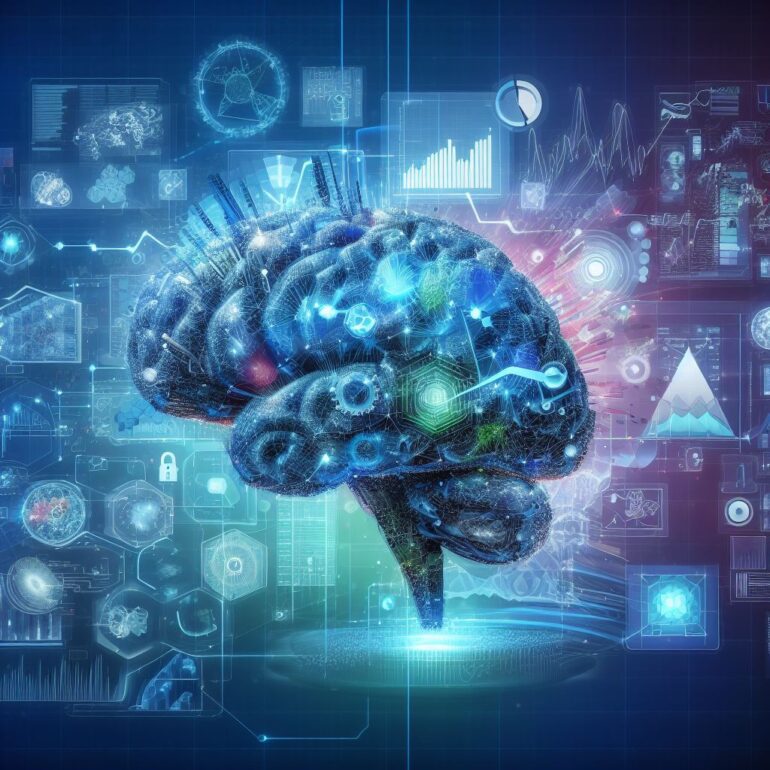TL;DR:
- AI’s growing role in the Maritime Transportation System (MTS) has gained widespread recognition in recent years.
- AI, a fusion of machine and software intelligence, has evolved from science fiction to a serious academic discipline.
- Modern AI relies on deep learning, big data, and neural networks to enhance knowledge representation and problem-solving.
- AI plays a pivotal role in cybersecurity through defensive, offensive, and adversarial categories.
- In the MTS, AI will revolutionize cyber defense, detect vulnerabilities, and optimize navigation, but it can’t replace basic cybersecurity measures.
Main AI News:
In the realm of the maritime transportation system (MTS), artificial intelligence (AI) has quietly but significantly shaped various facets over recent years. While AI’s presence has existed for over seven decades, its widespread acknowledgment only gained momentum in the past decade, reaching a critical point of awareness in 2023. This year has been marked by an abundance of articles discussing AI across diverse aspects of life, from its relevance to Hollywood’s actors and writers’ strikes to its societal implications. Opinions on AI range from its potential as a boon to humanity to concerns about it being a potential threat, sparking debates on regulation and legislation.
AI, at its core, embodies the amalgamation of machine and software intelligence. In the realm of science fiction, AI has often taken the form of humanoid robots, as seen in Isaac Asimov’s Robot stories (1940-1955) or the iconic 1956 film “Forbidden Planet” featuring Robby the Robot. However, AI has evolved into a serious academic and research discipline since the mid-1950s, adapting to advancements in computer and peripheral device technology. The genesis of AI research traces back to Alan Turing’s 1950 description of the Imitation Game, commonly known as the Turing Test, which serves as a metric to determine whether a machine can engage with humans indistinguishably from another human. While there is debate over whether Chat Generative Pre-trained Transformer (ChatGPT) has passed this test, it stands on the cusp of doing so.
Modern AI, emerging after 2010, relies on deep learning, a fusion of machine learning, big data, and neural networks. The digital revolution of the 1960s played a pivotal role in the development of big data by digitizing various forms of data and communications, laying the foundation for vast datasets that AI systems could search, analyze, and manipulate, serving as the bedrock of AI learning. Neural networks, a concept that dates back to 1952 with the Stochastic Neural Analog Reinforcement Calculator (SNARC), empower computers to learn from the collective knowledge within networks, departing from sole reliance on pre-programmed instructions. Current AI research ambitions encompass advancements in knowledge representation, reasoning, planning, natural language processing, and perception, all aimed at crafting machines with general intelligence capable of solving diverse problems. AI’s influence is pervasive in our daily lives, often operating in less conspicuous ways, powering advanced search engines, marketing recommendation systems, speech recognition, autonomous vehicles, creative tools, strategic games, and medical diagnostic aids.
To highlight AI’s capabilities, consider a British computer scientist who submitted patent applications to the Intellectual Property Office (IPO) on behalf of an AI creation. In 2019, the IPO denied the applications, asserting that patents could only be granted to individuals. Despite the inventor’s claim that the AI possessed “conscious and sentient machine intelligence,” the UK Supreme Court upheld the IPO’s decision in December 2023.
While these developments may appear distant from maritime and cybersecurity, AI is already deeply embedded in both domains. Automation and autonomy are integral to maritime operations, driven by AI at various levels, from smart ships, ports, and containers to fully autonomous navigation. However, it is crucial to differentiate between automation and certain forms of autonomy, which rely solely on algorithmic processes devoid of genuine intelligence.
AI’s impact on cybersecurity unfolds in three categories: defensive, offensive, and adversarial. Defensive AI aids in cyber defense by detecting cyberfraud, anomalous email traffic, phishing attempts, and strengthening intrusion detection and prevention, log analysis, and incident response strategies. Its scope extends to mitigating denial-of-service attacks and predicting software vulnerabilities and zero-day exploits, enhancing risk management and patch management efficiency.
On the flip side, offensive AI serves as an anti-defensive tool for planning and executing cyberattacks. It can swiftly gather internet-based information to craft highly personalized spear-phishing and social engineering attacks. AI excels in generating convincing misinformation, deep fakes, data poisoning, and authentic-seeming data traffic manipulation. Password cracking, automated hacking, and botnet management are streamlined through AI tools.
The third category, adversarial AI (AAI), involves methods that directly target other AI systems. AAI tactics encompass degrading, denying, deceiving, or manipulating AI systems. These methods include attacking other AI systems’ models, introducing noise to confuse opposing AI, reprogramming or injecting errors into AI software, or poisoning training data used by rival AI systems.
Given the unique environment and information technology systems inherent in the maritime transportation system, cybersecurity needs here are distinctive. AI will inevitably become an integral component of cyber products, procedures, and strategies, mirroring its adoption in various industries. AI’s unparalleled ability to swiftly detect, predict, and assess vulnerabilities and attack patterns will revolutionize maritime security. It will excel in producing and anticipating exploits and defenses, while also monitoring Global Positioning System (GPS) and Automatic Identification System (AIS) data and estimating real-time vessel trajectories. AI’s rapid learning curve will enable it to navigate both offensive and defensive aspects of the MTS.
All stakeholders in the maritime transportation system should proactively integrate AI into their organizations, systems, and requirements. AI undoubtedly plays a critical role in cyber defense, but it cannot operate in isolation. Maintaining a robust cybersafety culture, adhering to fundamental cybersecurity practices, and diligently identifying and mitigating vulnerabilities remain paramount.
Conclusion:
The integration of AI into maritime transportation and cybersecurity signifies a paradigm shift in the industry. As AI continues to enhance detection, prediction, and optimization, stakeholders must adapt to remain competitive and ensure the security of their operations. Leveraging AI’s capabilities while maintaining fundamental cybersecurity practices will be crucial for success in this evolving market.

